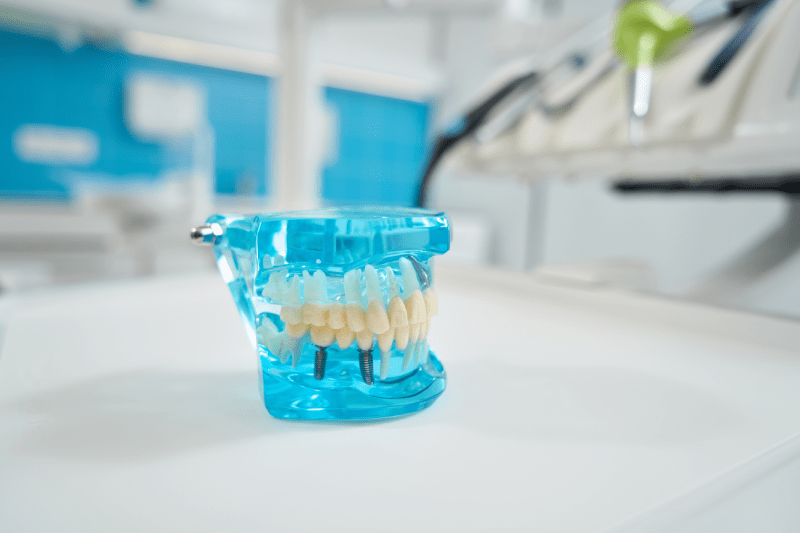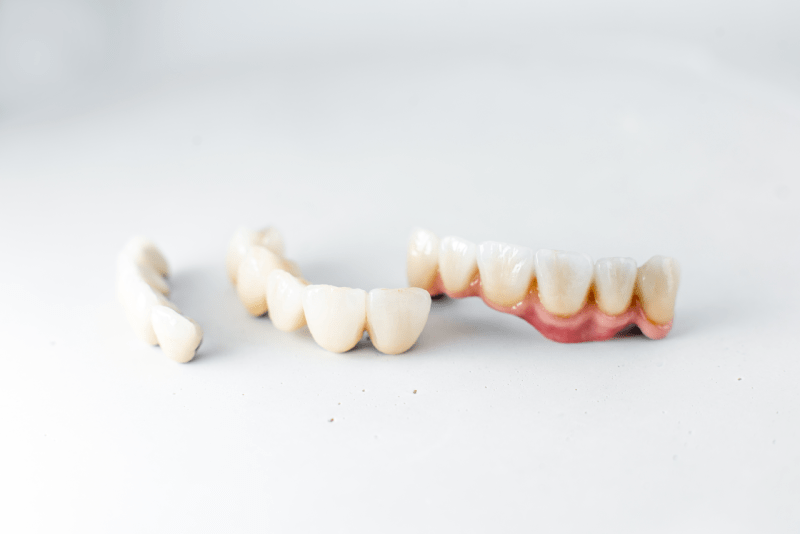What Is The Main Difference Between Dental Veneers And Lumineers?
The main difference between dental veneers and Lumineers lies in their thickness and the preparation of the tooth. Traditional dental veneers are thin, custom-made shells, but they often require the dentist to remove a small amount of enamel from the tooth’s surface to ensure a proper fit and natural appearance. This process is irreversible, as the enamel cannot be regrown.
Lumineers, on the other hand, are a specific brand of ultra-thin veneers, often as thin as a contact lens, which allows them to be placed directly on the tooth without the need for significant enamel reduction. This makes the procedure less invasive and potentially reversible. While traditional veneers offer more flexibility in correcting color and shape issues, the non-invasive nature of Lumineers is a key advantage for patients who want to preserve their natural tooth structure.
How Does The Application Process Differ For Each?
The application process for traditional veneers and Lumineers has notable differences, primarily due to the level of tooth preparation required. For traditional veneers, the first step involves a dentist preparing the teeth by shaving off a small amount of enamel, which can be a permanent step. After this, an impression of the teeth is taken and sent to a lab where the custom veneers are created. In the next appointment, the veneers are bonded to the prepared teeth.
For Lumineers, the process is much simpler. Since they are ultra-thin, little to no tooth reduction is needed. The dentist takes an impression of the teeth and the Lumineers are custom-made. In a single follow-up appointment, they are bonded directly onto the teeth. This non-invasive approach reduces chair time and eliminates the need for temporary restorations, making it a faster and more comfortable process for the patient.
Which Option Is Better For Correcting Tooth Discoloration?
Both dental veneers and Lumineers are highly effective at correcting severe and permanent tooth discoloration that doesn’t respond to professional whitening treatments. However, traditional porcelain veneers often offer a more customizable solution for significant color changes. Because a small layer of enamel is removed, the underlying tooth color is less likely to show through.
This gives the dentist more control over the final shade and allows for a brighter, more dramatic transformation. While Lumineers can also improve tooth color, their ultra-thin nature means that the underlying tooth shade may still be visible, especially if the discoloration is dark. For patients seeking the most vibrant and complete color change, traditional veneers may be the superior choice, depending on the individual case.
Can They Fix Gaps And Spacing Issues?
Yes, both dental veneers and Lumineers can effectively close small to moderate gaps between teeth, a condition known as diastema. The dentist custom-designs the veneers or Lumineers to be slightly wider than the natural teeth, filling in the spaces and creating a more uniform and aesthetically pleasing smile.
Lumineers are particularly useful for this purpose because they are so thin, allowing for a subtle and natural-looking result without extensive tooth preparation. The effectiveness of this treatment depends on the size of the gaps; for very large gaps, orthodontic treatment or other restorative options might be more suitable. Your dentist will evaluate the severity of the spacing and recommend the best course of action to achieve a harmonious smile.
Which Lasts Longer, Veneers Or Lumineers?
The lifespan of both traditional dental veneers and Lumineers depends heavily on a patient’s oral hygiene habits, dietary choices, and regular dental check-ups. On average, traditional porcelain veneers typically last 10 to 15 years, and with proper care, they can last even longer. This is because they are made from a strong, durable material that is highly resistant to stains and chips.
Lumineers, being ultra-thin and less invasive, also have a long lifespan, often lasting around 10 years. While both are durable, traditional veneers may have a slight edge in longevity due to their thicker, more robust construction. Ultimately, the key to maximizing the lifespan of either is maintaining excellent oral hygiene and avoiding habits like teeth grinding or biting on hard objects.
Are There Any Pain Or Discomfort Differences?
The level of pain and discomfort experienced during the procedure is a key differentiator between dental veneers and Lumineers. The traditional veneer procedure requires the removal of enamel, which can lead to tooth sensitivity both during and after the treatment. While the procedure is performed under local anesthesia to minimize pain, some patients may still experience discomfort.
In contrast, the Lumineers procedure is often completely painless because there is little to no tooth reduction. This eliminates the need for anesthesia in most cases, making it a very comfortable experience. Patients can leave the dentist’s office without any sensitivity or discomfort, which is a significant advantage for those with a low pain tolerance or anxiety about dental procedures.
Which Option Is More Affordable?
Generally, traditional dental veneers tend to be more affordable than Lumineers. The cost of dental veneers varies depending on the material used, the number of teeth being treated, the dentist’s experience, and the location of the clinic. The price of Lumineers, being a brand-name product, often includes a premium for their patented technology and less invasive application process. While the initial investment for Lumineers might be higher, some patients find the benefits of a no-prep, reversible procedure worth the extra cost. It is essential to get a detailed quote from your dentist that includes all fees, lab work, and follow-up appointments.
Can I Get A Hollywood Smile With Lumineers?
Yes, a Hollywood Smile can be achieved with Lumineers. This treatment is all about creating a perfect, dazzling smile with a harmonious blend of shape, size, and color. While traditional veneers are more commonly associated with this transformation, Lumineers can also deliver stunning results. Their ultra-thin design allows for a very natural-looking change. The dentist will custom-design the Lumineers to create a symmetrical and bright smile that complements your facial features. For those who want a dramatic yet non-invasive smile makeover, Lumineers are an excellent choice.
Are Veneers A Permanent Solution?
Traditional dental veneers are considered a permanent solution, primarily because the tooth preparation process is irreversible. A thin layer of enamel is removed to create space for the veneer, and this enamel will not grow back. Therefore, once you decide to get veneers, you are making a lifelong commitment to them. If a veneer becomes damaged or needs to be replaced, a new one must be applied. This permanence is often seen as a benefit, as it provides a durable and long-lasting solution for smile imperfections.
Can I Remove Lumineers Later?
One of the most significant advantages of Lumineers is their reversibility. Because little to no tooth reduction is needed for their placement, your natural tooth structure remains intact underneath. This means that if you ever decide to remove the Lumineers in the future, your original teeth will be largely unchanged. This is not the case with traditional veneers, which require the permanent alteration of the tooth enamel. The reversibility of Lumineers offers peace of mind for patients who are unsure about making a permanent change to their smile.
Do I Need To Shave My Teeth For Lumineers?
No, the main selling point of Lumineers is that they are “no-prep” or “minimal-prep.” The ultra-thin nature of the Lumineers allows for their placement without the need for extensive shaving or grinding of the natural tooth enamel. In some cases, a small amount of reshaping may be done to ensure a better fit, but this is minimal compared to the preparation required for traditional veneers. This preserves the natural tooth structure, making the procedure non-invasive, reversible, and much more comfortable for the patient.
Which Option Is More Suitable For Patients With Sensitive Teeth?
For patients with sensitive teeth, Lumineers are generally the more suitable option. The sensitivity associated with dental procedures often comes from the removal of enamel, which exposes the inner, more sensitive layers of the tooth. Since the Lumineers procedure requires little to no enamel removal, it significantly reduces the risk of post-operative tooth sensitivity. Traditional veneers, on the other hand, can cause increased sensitivity due to the necessary tooth preparation. If you have a history of tooth sensitivity, you should discuss this concern with your dentist, who can help you choose the best treatment.
Are Lumineers As Natural Looking As Veneers?
Both Lumineers and traditional veneers can create a very natural-looking smile, but the final aesthetic result depends on various factors, including the skill of the dentist and the quality of the lab work. Traditional porcelain veneers, being thicker, can hide more severe discoloration and imperfections, giving the dentist more control over the final result. Lumineers, being ultra-thin, may be more translucent, allowing some of the underlying tooth color to show through. However, for a patient with naturally well-aligned teeth and minimal discoloration, Lumineers can provide a beautiful, seamless, and very natural-looking result without extensive tooth preparation.

Can I Use My Dental Insurance For Them?
Whether your dental insurance covers veneers or Lumineers depends entirely on your specific insurance plan and the reason for the treatment. Many dental insurance plans do not cover cosmetic procedures, so if you are getting veneers purely for aesthetic reasons, you may have to pay for the full cost out of pocket. However, if the veneers are needed for a medical reason, such as to restore a fractured or severely worn tooth, your insurance might cover a portion of the cost. It is essential to check with your insurance provider and get pre-authorization before starting the treatment to avoid any financial surprises.
Which Option Is Better For Damaged Or Chipped Teeth?
For significantly damaged or chipped teeth, traditional dental veneers are often the more robust solution. Their thicker, more durable construction provides greater strength and stability to the compromised tooth. They can effectively restore the tooth’s function and appearance, offering a long-lasting and protective solution. While Lumineers can be used for minor chips, their ultra-thin nature may not provide enough structural integrity for more substantial damage. Your dentist will assess the extent of the damage to your teeth and recommend the most appropriate option to ensure a strong and lasting restoration.
How Do They Affect My Bite And Chewing?
Both veneers and Lumineers are designed to not only improve the aesthetics of your smile but also to restore proper chewing function. They are custom-made to fit your teeth perfectly, ensuring that your bite remains balanced and comfortable. After the procedure, it is normal to experience a short adjustment period as you get used to the new shape and feel of your teeth. However, if you experience any discomfort or if your bite feels “off,” it is crucial to contact your dentist. A well-placed veneer or Lumineer should not negatively affect your ability to chew or speak.
Can I Get A Mix Of Both?
It is possible to get a mix of both dental veneers and Lumineers, depending on your individual needs and the condition of your teeth. For example, you might choose traditional veneers for some of your front teeth that require more significant color or shape correction, while opting for Lumineers on other teeth that need minimal changes. This hybrid approach allows for a customized treatment plan that addresses the unique needs of each tooth while being mindful of cost and invasiveness. A comprehensive consultation with your dentist will help determine if this is a suitable option for you.
How Do They Resist Staining?
Both traditional porcelain veneers and Lumineers are highly resistant to staining, especially compared to natural teeth and composite bonding materials. The non-porous surface of the porcelain and the proprietary Lumineers material prevents common staining agents like coffee, tea, and red wine from penetrating the surface. This means that your new, bright smile will stay white and vibrant for years to come with proper oral hygiene. While they are stain-resistant, it is still a good practice to maintain regular brushing and flossing habits to keep them looking their best.
How To Find The Right Dentist For The Procedure?
Finding the right dentist for your veneer or Lumineer procedure is a critical step towards a successful outcome. You should look for a dentist who is experienced in cosmetic dentistry and has a proven track record of successful cases. Ask to see a portfolio of their previous work, and make sure to read patient reviews and testimonials. A good dentist will perform a thorough examination, listen to your aesthetic goals, and create a customized treatment plan that is right for you. They should also be transparent about costs and the entire process. Cure Holiday can connect you with experienced and reputable dentists who specialize in these procedures.
How Is The Cost Breakdown For Each?
The cost of both veneers and Lumineers includes several components. The primary cost is for the veneers themselves, which can vary greatly depending on the material and the number of teeth being treated. Additional costs may include the initial consultation, tooth preparation (for traditional veneers), lab fees for custom creation, and the bonding process. The price of Lumineers is often a set fee per tooth, which includes the cost of the material, lab work, and application. It is important to ask for a detailed cost breakdown from your dentist to understand what is included in the final price.
Which Is Better For Crooked Teeth?
For very mild cases of crookedness, both veneers and Lumineers can provide a quick cosmetic fix. They can be used to mask minor alignment issues and create the appearance of a straighter smile. However, neither is a substitute for orthodontic treatment. If your teeth are significantly crooked, your dentist will likely recommend braces or clear aligners to correct the underlying alignment problem before considering veneers or Lumineers. This is because a straight foundation is essential for the long-term health and stability of your teeth and any restorations placed on them.
Can I Get A Whiter Smile With Both?
Yes, both veneers and Lumineers are excellent options for achieving a whiter, brighter smile. Unlike natural teeth, which can become stained over time, the materials used for veneers and Lumineers are highly resistant to staining. This means that once your new smile is in place, it will maintain its brilliance and whiteness for many years. You and your dentist will work together to select the perfect shade of white that complements your natural skin tone and facial features, ensuring a beautiful and lasting result.
Can I Get Both In A Single Trip To Turkey?
Yes, the convenience of getting dental work in Turkey means you can get both traditional veneers and Lumineers in a single, well-planned trip. Dental clinics in Turkey are known for their efficiency and modern technology, which often allows for the entire procedure to be completed in a matter of days. The first appointment is for consultation and preparation, and the second is for the final bonding of the veneers or Lumineers. This allows you to combine your treatment with a vacation, saving both time and money. Cure Holiday can help you arrange a seamless and stress-free trip.
Are There Any Downsides To Lumineers?
While Lumineers offer the significant advantage of being non-invasive and reversible, they do have some potential downsides. Their ultra-thin nature means they may not be able to effectively hide severe discoloration or significant imperfections. They also may not be as durable as traditional veneers in the long run. In some cases, the thinness of Lumineers can lead to a slightly “bulky” appearance if too many are placed without any tooth reduction. Additionally, being a patented brand, they may be more expensive than traditional veneers.
Are There Any Downsides To Traditional Veneers?
The main downside of traditional dental veneers is the irreversible nature of the procedure. Once the enamel is removed, there is no going back, and you will always need to have a restoration on those teeth. This can also lead to increased tooth sensitivity during and after the procedure. In rare cases, the veneer can chip or fracture, requiring a replacement. However, for patients who are fully committed to a permanent smile transformation, these downsides are often outweighed by the benefits of a strong, durable, and highly customizable result.
How Do They Feel In The Mouth?
When properly placed, both veneers and Lumineers should feel completely natural in your mouth. They are custom-made to fit perfectly with your existing teeth and bite. After the procedure, it is normal to experience a short adjustment period, but any feeling of bulkiness or discomfort should be temporary. If you feel any pain or if the veneers are catching on your gums, it is essential to contact your dentist immediately for an adjustment. A well-fitting veneer or Lumineer should not interfere with your ability to speak or chew.

What Are The Maintenance Requirements For Both?
The maintenance for both veneers and Lumineers is very similar to the care for natural teeth. You should brush and floss regularly to prevent plaque and bacteria buildup around the restorations. Using a non-abrasive toothpaste is recommended to avoid scratching the surface of the veneers. Regular dental check-ups every six months are also crucial to ensure the health of your gums and the integrity of your restorations. By maintaining excellent oral hygiene, you can significantly extend the life of your new smile.
How Do They Affect My Gums?
When applied correctly, both veneers and Lumineers should have no negative effect on your gums. The dentist ensures that the edges of the veneers are perfectly fitted and polished to prevent any irritation or inflammation of the gum tissue. However, if the veneers are not fitted properly, they can create a ledge that traps plaque and bacteria, leading to gum inflammation or periodontal disease. This is why choosing a skilled and experienced dentist is so important. Cure Holiday can connect you with dentists who have a proven track record of successful and healthy outcomes.
Can They Be Whitened Later?
No, dental veneers and Lumineers cannot be whitened later with professional whitening treatments. The materials they are made from, such as porcelain, are non-porous and do not respond to bleaching agents. This is why it is so important to choose the final shade of your veneers with your dentist before the treatment begins. If you are considering whitening your natural teeth, it should be done before the veneers are placed so that the veneers can be matched to the newly whitened shade of your natural teeth.
What If My Teeth Are Too Weak For Them?
If your teeth are too weak for traditional veneers, you may not be a suitable candidate for Lumineers either. Both procedures require a healthy and strong tooth foundation. If your teeth are severely damaged or have extensive decay, a dental crown may be a better option, as it covers the entire tooth and provides more structural support. The dentist will perform a comprehensive examination to determine the health of your teeth and recommend the most suitable restorative option for you.
What If I Have A Teeth Grinding Habit?
If you have a teeth grinding habit, also known as bruxism, it can pose a significant risk to both veneers and Lumineers. The excessive force from grinding can cause them to chip, crack, or even break. Your dentist will likely recommend a night guard to protect your new restorations while you sleep. Addressing the underlying cause of your bruxism, such as stress or jaw alignment issues, is also crucial for the long-term success of your veneers.
What Are The Benefits Of Getting Them In Turkey?
Getting veneers or Lumineers in Turkey offers numerous benefits. The most significant advantage is the cost-effectiveness, as prices are much more affordable compared to many Western countries, without compromising on quality. Clinics in Turkey use state-of-the-art technology and materials, and the dentists are highly experienced in cosmetic dentistry. Additionally, the ability to combine your treatment with a vacation makes the experience much more enjoyable. Cure Holiday helps you navigate this process by connecting you with top-tier clinics and providing a seamless travel experience.
How Can I Get A Personalized Treatment Plan?
To get a personalized treatment plan for dental veneers or Lumineers, the first step is to contact a dental clinic or a health tourism agency like Cure Holiday. You will be asked to provide intraoral photos and any recent dental X-rays. Based on this information, an experienced dentist will evaluate your case and recommend the most suitable treatment option for your specific needs and aesthetic goals. This initial consultation is crucial for creating a plan that is right for you.
How Do I Start My Journey With Cure Holiday?
Starting your dental journey with Cure Holiday is a simple and straightforward process. First, you can contact them through their website or phone to schedule a free consultation. You will be assigned a personal consultant who will guide you through every step of the process, from a virtual consultation with a dentist to a personalized treatment plan and cost estimate. They will also handle all your travel and accommodation arrangements, ensuring a stress-free and enjoyable experience.
What If I Have More Questions?
If you have more questions about dental veneers, Lumineers, or any other dental procedure, do not hesitate to contact Cure Holiday. Their team of experts is ready to provide you with detailed information and guidance. They can help you understand the differences between various treatments, choose the best option for your needs, and get a personalized price quote. We are here to help you achieve the smile of your dreams.



